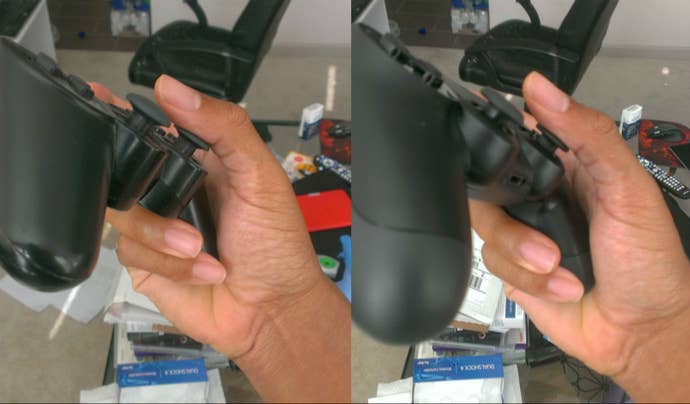Just How Good is the DualShock 4? Hands On With the New PS4 Controller
USGamer spends some time with Sony's new DualShock for PlayStation 4.
This article first appeared on USgamer, a partner publication of VG247. Some content, such as this article, has been migrated to VG247 for posterity after USgamer's closure - but it has not been edited or further vetted by the VG247 team.
We have three weeks until Sony's PlayStation 4 hits store shelves and wows or disappoints us with its next-gen prowess. In the meantime, retail distribution has decided to start selling controllers for a system that you can't play yet. The DualShock 4 is now available at some retailers, so I went to my local GameStop and plunked down $60 for my very own PS4 controller.
It's worth noting that the clerk at my local GameStop looked at me oddly when I asked about buying a DualShock 4, since they didn't have any on store shelves. In his words, "no one ever calls the PlayStation controllers by their real names."
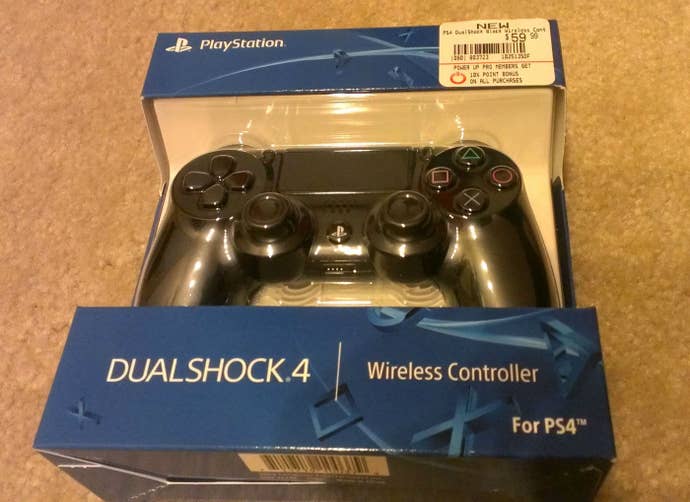
I've been looking forward to holding the DualShock 4 since E3, because while holding a controller attached to a demo unit on a crowded showfloor is one thing, having it in the comfort of your home is another. In fact, I spent ten minutes just switching back and forth between the DualShock 3 and 4, just to see how much improved the new controller is. Of course, I would do this before I had to review a PlayStation 3 game. Which is a shame, because the DualShock 3 feels like a boxy toy compared to its successor. It's like getting new glasses: your old ones feel fine, until you've tried the new ones on.
The DualShock 4 feels slightly thinner and longer than the DS3, but the new handgrips are larger and feel far more comfortable in my huge hands. The analog sticks are tighter than they were on the DS3, with a feeling of resistance approaching a 360 controller. Sony has made sticks slightly shorter and added a dip in the center of each one so your thumbs won't slip off. The button click on the analog sticks is not a deep as the DualShock 3, but still noticeable. The new directional pad has a more pronounced dip in the center that draws your thumb there naturally, but otherwise it feels like the same single piece rocker that we've had since the first PlayStation controller.
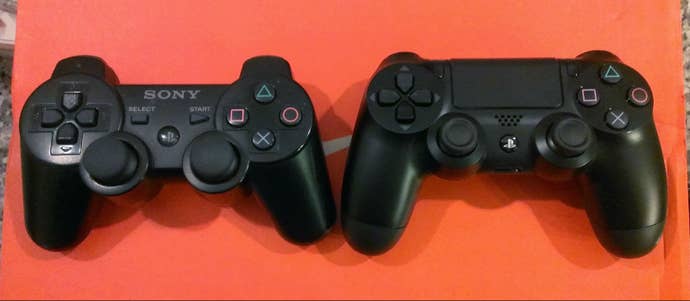
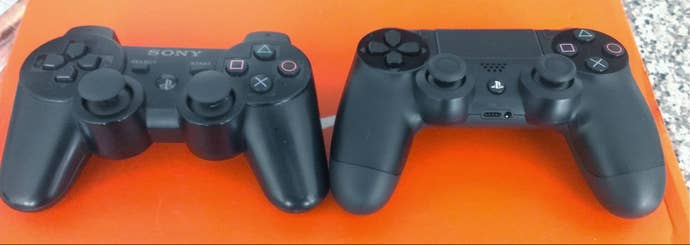
As Sony confirmed months ago, the face buttons are digital instead of analog this time; no one really used them for analog purposes, so it saves data bandwidth to switch them back to digital. They're closer together on the DualShock 4, making a tighter diamond shape.
"With the DualShock 3, we were able to get analog data, which games didn't really use," Sony Computer Entertainment product planning manager Toshimasa Aoki told VentureBeat last week. "For DualShock 4, we deleted that, and now it's all digital. The mechanism inside is a little different, and the data that games get is different."
The R1 and L1 buttons are a little rounder, while the R2 and L2 trigger have undergone a complete redesign. The triggers are now concave instead of convex; my fingers fell right into place as soon as I picked up the DualShock 4. Even outside of general use, the concave triggers have a second benefit: fewer accidental button presses when you set down the controller, since it now rests on the edge of triggers. R2 and L2 on the DualShock 3 have a sense of greater resistance and springy-ness as they reach their full press, but on the DS4 it's smooth all the way through. As a tiny bonus the names on the top buttons actually face toward you when you're using the controller.
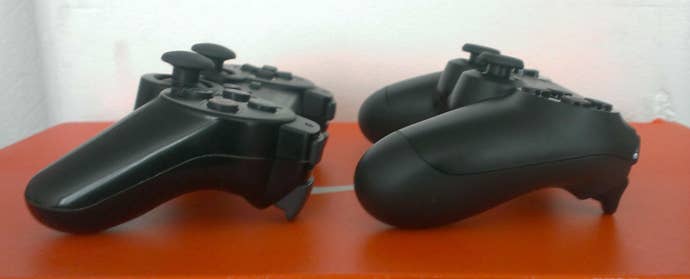

To charge your DualShock 3 you used a mini-USB cable, but the DualShock 4 switches to micro-USB. So if you've purchased a non-Apple portable electronic device in the past four years, you're probably good to go. The controller itself does not come with a micro-USB cable, but one will come with the PlayStation 4. I have a ton of them lying around the house, so I grabbed one and plugged it into my PC to see what would happen.
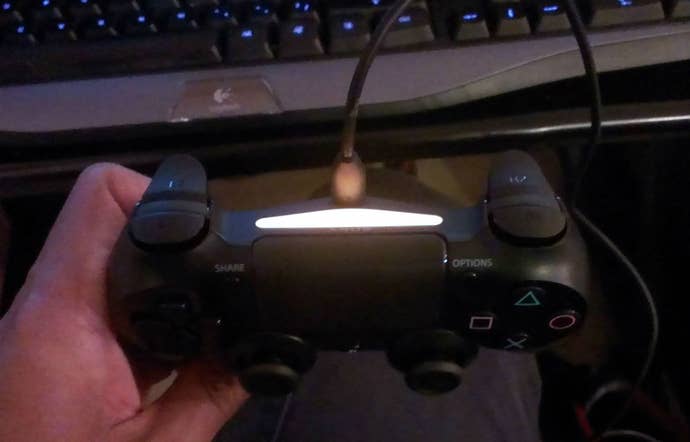
My Windows 8.1 PC did recognize the controller as a generic USB controller with a total of fourteen buttons: Square, X, Circle, Triangle, L1, R1, L2, R2, L3, R3, Share, Options, the PS button, and the click of the touchpad. The touchpad itself doesn't register and the D-Pad comes up as the "point of view hat", like a flight stick. Oddly enough, the L2 and R2 triggers show up as buttons and change X and Y Rotation in Windows settings. The controller can also be reportedly be paired to a PC with Bluetooth, but I was unable to test that as my motherboard lacks a Bluetooth connection. Fun fact: the controller LED glows amber when hooked into a PC.
I tried it out with a few PC games, but the results weren't all that great. Saints Row IV saw the controller and everything worked... except for the fact that the analog stick was inverted. Pushing down on the stick would make my character more forward and vice versa. There was no way to fix this using the in-game menus. Batman: Arkham City and Far Cry 3 were complete non-starters and neither game recognized the controller at all. Adult Swim's Soundodger worked fine. If you're getting this as a PC controller, I'd say your best bet is to wait. Sony needs to release some PC drivers for the DualShock 4 and I hear they're busy launching a console.
All in all, I think Sony has done a great job with the new DualShock. It's a marked improvement over the DualShock 3, but I'll need more time with an actual game in order to deliver my final verdict. That said Sony's off to a great start, and in previous demos, I've preferred the DualShock 4 to the Xbox One controller.
